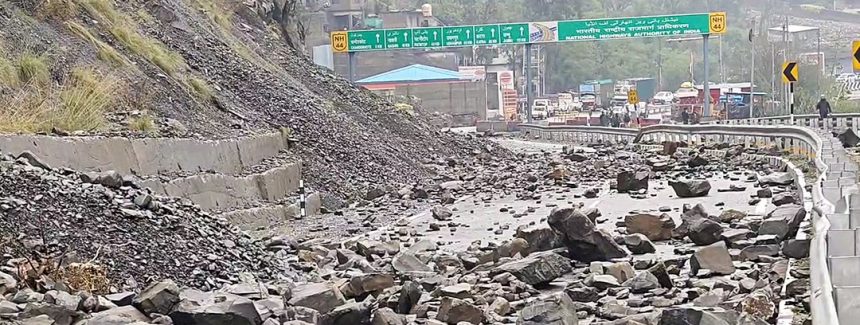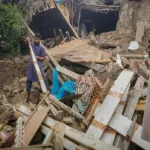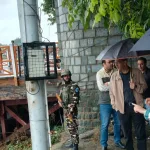Srinagar, May 01: In the pre-dawn hours of April 21, the skies over Ramban district roared without warning. Within moments, a furious cloudburst unleashed torrents of rain upon the area, triggering flash floods and landslides that swept through villages, damaged nearly 1,000 homes and left more than 200 vehicles mangled beneath mud and stone.
It was nature at its most unpredictable — and unforgiving. The worst-hit area was Marh, a stretch now resembling a shattered land. Heavy boulders, dislodged by the surge, crashed down the mountainside, burying vehicles and structures in their path. Cries for help pierced the sound of rushing water and falling debris, but amidst the chaos, there were also cries of relief as teams rushed to save lives.
“We succeeded in saving lives, which was our first priority,” said Deputy Commissioner Ramban, Baseer ul Haq, as he surveyed the aftermath. “The damage is immense. Many homes are completely destroyed, others partially so. We are compiling details and will soon submit a report to the government for compensation.”
At the Marh spot, excavators worked tirelessly to dig through the debris, their engines humming a rhythm of resilience. “Some vehicles are still stuck under the rubble,” the DC said. “Operations are on to pull them out.”
The tragedy has prompted the administration to reevaluate disaster preparedness. Cloudbursts, though rare, are becoming more frequent in Jammu and Kashmir’s hilly terrain, posing a serious threat to communities along vulnerable highway stretches.
“In light of this incident, we are planning to upgrade the early warning system along the Ramban highway corridor,” DC Haq confirmed. “We must minimise the risk as nobody can prevent the natural calamities. Warning alarms may help take early precautions which would ultimately help save lives.” It took the Ramban administration 36 to 48 hours to restore the highway, first for the light motor vehicles and then heavy vehicles as well. “At present, the highway is through from both sides for all sorts of vehicles even though repair and clearance work is going on at some points,” the DC said.
While the wounds of the disaster are still fresh and the air carries the scent of wet earth and anguish, there is a growing sense of determination among Ramban’s people — and its administration — to rebuild. With accurate assessments underway and a compensation process in motion, hope flickers amid the destruction. This wasn’t just a cloudburst. It was a reminder of fragility — and of the strength that follows.
A driver from South Kashmir’s Anantnag district, whose Tavera vehicle was under the debris at Morh, said that he was lucky to be alive. “The cloudburst was so heavy that I thought it was the end. But I jumped out of the vehicle and asked the passengers to follow suit. They were all safe. Once my vehicle is out, only then I know the exact damage caused to it.” Over 400 people were rescued by the timely efforts of the administration.
Ramban’s Catastrophe: Official assessment reveals 1000 houses damaged, over 200 vehicles submerged
Compiling final data for compensation, upgrading of warning gadgets on cards, says DC Ramban

Leave a Comment Leave a Comment







